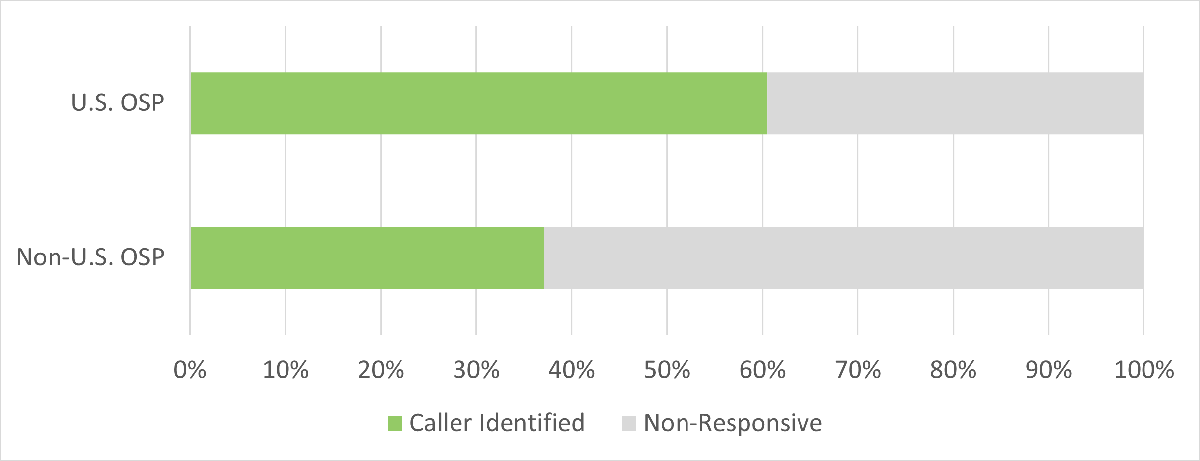Industry Traceback Group analyzes robocall tracebacks
The FCC asked the Industry Traceback Group (ITG) for information on robocall tracebacks. The ITG responded with a report that analyzes traceback activity over the past six months. Here are a few highlights that caught our eye.
The ITG report analyzed two aspects of traceback activity:
- Traceback response time patterns
- Foreign vs. domestic traceback
The report wrapped up with guidelines that service providers should follow in responding to traceback requests.
Traceback response time patterns
How long does it take to complete a robocall traceback investigation? The ITG analysis found that it depends upon two things:
- The number of hops in the call path. Longer call paths with more hops take longer, not just because there are more hops, but also because providers w-a-y upstream are slower to respond.
- Whether the traceback process followed the robocalls all the way back to the origin or were stymied by a non-responsive provider. In these cases, even the downstream providers that did respond were slower to do so.
This is interesting. When there was a non-responsive provider along the call path, even the responsive downstream providers were slower to respond. Is this because robocall-heavy call paths tend to include less responsive providers along the way?

Foreign versus domestic tracebacks
How successful are tracebacks with foreign vs. domestic OSPs? Here are the numbers:
Traceback Success Varies by OSP Location

Figure 1: Traceback Results October 2021 – March 2022
So non-U.S. OSPs are less responsive to traceback requests? Maybe, but there are several things going on here:
- U.S. based providers are becoming more familiar with the traceback process.
- Providers outside of the U.S. are less familiar with this.
- Some countries have privacy laws that restrict disclosure of caller details.
- And yes, there are some bad actors that will look for ways to avoid participating. However, the report mentioned that some providers were responsive on some tracebacks but not on others.
Traceback guidelines
The report concludes with tips for transit providers and OSPs on responding to traceback requests.
- Transit providers should provide detailed info about the next upstream provider if it’s a new one that is not already on file in the traceback system.
- OSPs should provide information about the caller.
- If the OSP thinks the calls were legal, they must explain why.
- If the OSP does not claim that the calls were legal, then they must explain mitigation steps they’ve taken.
The full report presentation is available online. It’s worth a look.
TransNexus solutions
TransNexus is a leader in developing innovative software to manage and protect telecommunications networks. The company has over 20 years’ experience in providing telecom software solutions including toll fraud prevention, robocall mitigation and prevention, TDoS prevention, analytics, routing, billing support, STIR/SHAKEN and SHAKEN certificate services.
Contact us today to learn more.
TransNexus has a comprehensive suite of robocall mitigation solutions to prevent the origination of unlawful robocalls.
Learn more about robocall mitigation